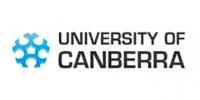Bachelor of Medical Radiation Science (Medical Imaging) (319JA.3)
If your career goal is to become a qualified diagnostic radiographer, but you’re also looking for a competitive edge, then this course will give you the skills, knowledge, and experience to confidently apply for employment both in Australia and overseas – six months ahead of other diagnostic radiographer courses.
This course offers an accelerated four-year degree which completes all training in only 3.5 years allowing you enter the job market earlier and giving UC graduates a definite competitive advantage when it comes to looking for future employment opportunities.
Packed with Work Integrated Learning (WIL) choices, this unique course can include an embedded honours program, allowing you to study the bachelor’s degree on its own for three and a half years, or undertake a research project in your third and fourth year to graduate with Honours.
Upon graduation, you’ll be eligible for registration from the Medical Radiation Practice Board of Australia (MRPBA) to practice as a Diagnostic Radiographer and can explore career opportunities in general radiography, angiography, mammography, computed tomography (CT), magnetic resonance imaging (MRI) and medical ultrasound.
Campus Information
Canberra, Bruce
The University of Canberra is located in the suburb of Bruce in the Australian Capital Territory. Surrounded by Lake Ginnindera, the new suburb of Lawson, Radford college and residential housing, regular public buses can drop you right on campus. Open space, natural calm, tall trees and wildlife. Close to the city. Convenient to shopping. Great food, cool cafes, events and markets; a buzzing social hub with something for everyone. Student accommodation, an on-campus medical and counselling centre, the Australian Institute of Sport, Calvary Public Hospital, Belconnen Shopping Mall and a variety of restaurants are all within walking distance.
Intakes
- Feb
Application Processing Time in Days: 14
Application Process
Minimum English Language Requirements
| English Level Description | IELTS (1.0 -9.0) | TOEFL IBT (0-120) | TOEFL CBT (0-300) | PTE (10-90) | |
|---|---|---|---|---|---|
| Expert | 9 | 120 | 297-300 | 86-90 | |
| Very Good | 8.5 | 115-119 | 280-293 | 83-86 | |
| Very Good | 8 | 110-114 | 270-280 | 79-83 | |
| Good | 7.5 | 102-109 | 253-267 | 73-79 | |
| Good | 7 | 94-101 | 240-253 | 65-73 | |
| Competent | 6.5 | 79-93 | 213-233 | 58-65 | |
| Competent | 6 | 60-78 | 170-210 | 50-58 | |
| Modest | 5.5 | 46-59 | 133-210 | 43-50 | |
| Modest | 5 | 35-45 | 107-133 | 36-43 | |
| Limited | 4 | 32-34 | 97-103 | 30-36 | |
| Extremely Limited | < 4 | < 31 | < 93 | < 30 |
Job Opportunity Potential
A Bachelor of Medical Radiation Science (Medical Imaging) is a globally recognised and respected qualification that will enable to pursue a career in any of the following positions.
- general radiographer
- mammographer
- angiographer
- magnetic resonance imaging (MRI) radiographer
- computed tomography (CT) radiographer
- clinical educator
- clinical researcher
- research manager
- vendor application specialist
- sonographer*
To gain accreditation in this field*, further postgraduate study is necessary.
PSW Opportunity
Major Cities
- Sydney
- Melbourne
- Brisbane
Regular 2 years post study work visa for international students completing Bachelors and Masters degrees (minimum 92 weeks), 3 years for Masters by Research and 4 years for PhD. graduates
Cities and major regional centres
- Perth
- Adelaide
- Gold Coast
- Sunshine Coast Canberra Newcastle/Lake Macquarie
- Wollongong/Illawarra Geelong
- Hobart
International students studying at regional universities will be eligible to access an
additional year in Australia on a post-study work visa
(Which means a Bachelors or Masters graduate can get up to 3 years of PSW visa)
Regional centres and other regional areas
All other locations
(list of cities)
International students studying at regional universities will be eligible to access an additional
2 years in Australia on a post-study work visa
(Which means a Bachelors or Masters graduate can get up to 4 years of PSW visa)
Admission Requirement / Eligibility Criteria
Admission to this course is based on an entrance rank. A rank can be achieved by the following means:
- Year 12 ATAR
- other Australian Qualification
- work experience
- overseas qualification
We also offer a number of entry initiatives that give you the opportunity to gain entry to the University via alternate pathway programs and admissions schemes.
Additional admission requirements
- Police clearance checks
- Immunisation
- Current First Aid certificate
Assumed knowledge
Assumed knowledge for entry is to HSC equivalent of Biology, Physics and Mathematics. Inherent Requirements: Clinical practice and/or clinical laboratories during the medical imaging course require students to: - be involved in encounters where students must physically interact with patients and/or other students coming from a range of ethnic, age, gender and disability backgrounds; - be physically capable to independently lift and move patients and equipment and to wear lead gowns (heavy) for extended periods of time; - be involved in patient encounters where patients may be severely injured or be at the end stage of terminal illnesses; - work in environments which may be highly stressful; - have vision able to visualise detail within medical images; - due to government requirements, wear clothing during clinical placements that does not cover the elbows and forearms; - attend clinical workplaces, for extended periods of time, in interstate, metropolitan, regional and rural areas.
For More Information Please Connect to Our PSA Counselor.
- Course Code: 087833F
- Course Type: Full Time
- Course Level: Bachelors/UG Degree
- Duration: 03 Year 06 Month
-
Total Tuition Fee:
143500 AUD
Annual Cost of Living: 24505 AUD
Application Fee: N/A
Similar Programs
- Bachelor of Science (Biomedical Science) (NPB001.1) at University of Canberra
- Bachelor of Science (NPB003.1) at University of Canberra
- Bachelor of Health Science (HLB103.2) at University of Canberra
- Bachelor of Science in Psychology (Honours) (769AA.3) at University of Canberra
- Bachelor of Health Sciences (Honours) (HLH201.1) at University of Canberra
- Bachelor of Health Science (Human Movement) (HLB101.1) at University of Canberra

